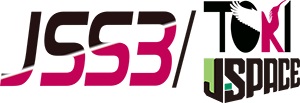Numerical Study on Combustible Flow in supersonic Flight Engines and Rocket Engines
JAXA Supercomputer System Annual Report April 2016-March 2017
Report Number: R16E0039
- Responsible Representative: Nobuyuki Tsuboi(Department of Mechanical and Control Engineering, Kyushu Institute of Technology)
- Contact Information: Nobuyuki Tsuboi(tsuboi@mech.kyutech.ac.jp)
- Members: Satoshi Koduka, Maiko Iwai, Toshihiro Iwasa, Takahide Araki, Keisuke Fujimoto, Motaka Niibo, Moyuki Mutato, Seiichiro Eto, Keisuke Yoshida, Daiki Muto, Nobuyuki Tsuboi
- Subject Category: Space(Rocket engine,Space transportation)
Abstract
Reactive Fluid Dynamics Laboratory at Department of Mechanical and Control Engineering, Kyushu Institute of Technology has the following research keywords: (1)Numerical simulation(CFD) (2) Compressible andsupersonic/hypersonic flow (3)Combustion flow (4)Liquid rocket engine, Detonation. We study these topics mainly by using numerical simulations and we also conduct some experiments. We collaborate on research activities with many domestic and international researchers.
Goal
Fundamental studies on nozzles and combustors for Japanese rocket engines and supersonic engines are performed by using numerical simulations.
Objective
Academic and applicative researches on fluid dynamics and combustion mechanism, and development of effective numerical methods are carried out in order to develop Japanese rocket engines and supersonic engines.
References and Links
N/A
Use of the Supercomputer
We used JSS2 supercomputer in order to perform academic researches and application for design effectively.
Necessity of the Supercomputer
Fluid dynamics including combustion requires huge computational costs and the combustion in the rocket engines and detonation phenomena are its representative ones. The role of the supercomputer is to solve such the phenomena effectively.
Achievements of the Year
Three-dimensional numerical simulations of coaxial nitrogen jet mixing under supercritical pressures are performed with an emphasis on the effects of pressure on the mixing. The results show that the overall mixing behaviors are similar in terms of normalized density profiles between 5 and 12 MPa.
Publications
N/A
Computational Information
- Parallelization Methods: Hybrid Parallelization
- Process Parallelization Methods: MPI
- Thread Parallelization Methods: OpenMP
- Number of Processes: 24
- Number of Threads per Process: 8
- Number of Nodes Used: 12
- Elapsed Time per Case (Hours): 400
- Number of Cases: 1
Resources Used
Total Amount of Virtual Cost(Yen): 335,053
Breakdown List by Resources
| System Name | Amount of Core Time(core x hours) | Virtual Cost(Yen) |
|---|---|---|
| SORA-MA | 49,931.75 | 82,125 |
| SORA-PP | 0.22 | 1 |
| SORA-LM | 0.31 | 7 |
| SORA-TPP | 0.00 | 0 |
| File System Name | Storage assigned(GiB) | Virtual Cost(Yen) |
|---|---|---|
| /home | 181.65 | 1,713 |
| /data | 1,239.78 | 11,694 |
| /ltmp | 25,390.64 | 239,510 |
| Archiving System Name | Storage used(TiB) | Virtual Cost(Yen) |
|---|---|---|
| J-SPACE | 0.00 | 0 |
Note: Virtual Cost=amount of cost, using the unit price list of JAXA Facility Utilization program(2016)
JAXA Supercomputer System Annual Report April 2016-March 2017




